These green leaves of the horse tamarind plant also known at lead tree.
Large leguminous thornless shrub or small scrubby tree, forming dense stands with bushy crowns up to 6m height.
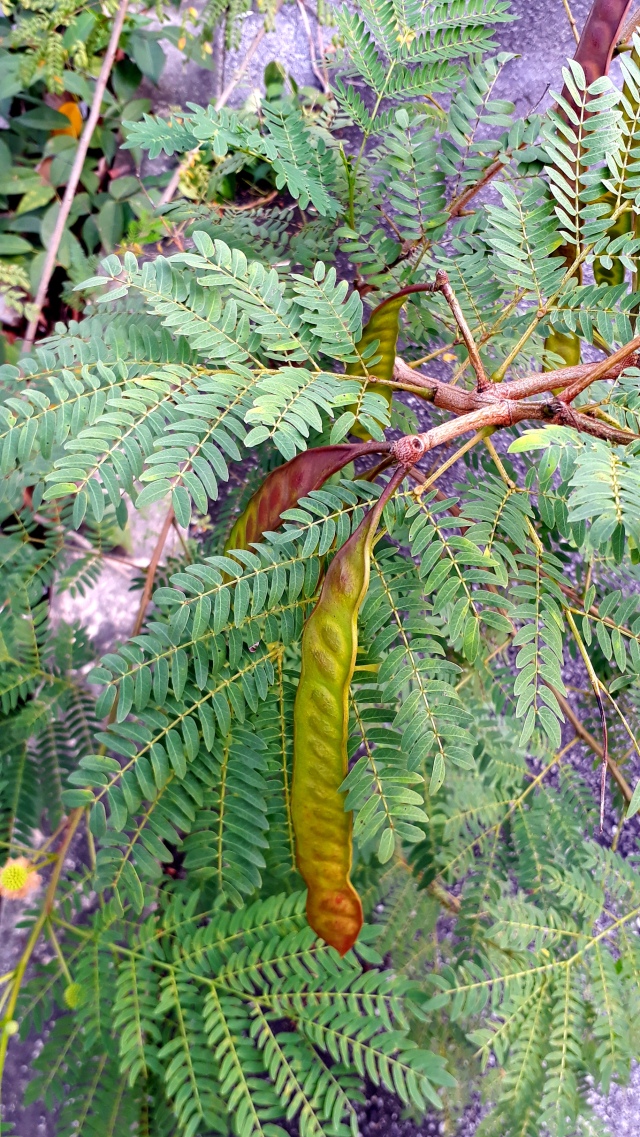
The flower heads are round, white, 3/4 inch (1.9 cm) in diameter puffballs of numerous white stamens with hairy, pale yellow anthers resembling those of Mimosa.
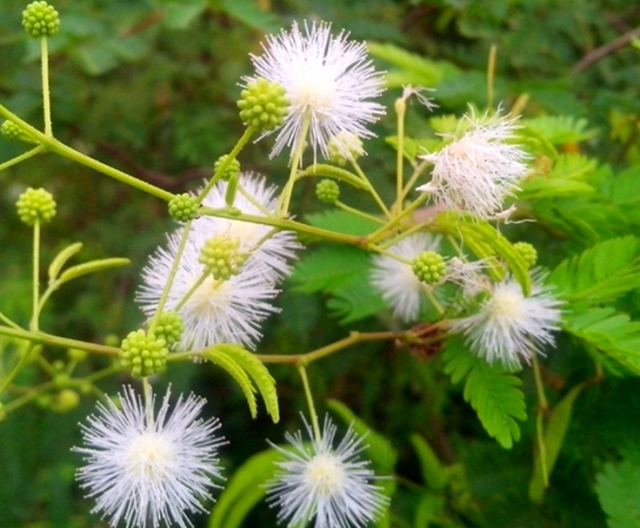
The flowers are followed by clusters of linear, up to 7 inch (18 cm) long, flat, thin, drooping, green drying to papery brown bean pods with a bead necklace-like row of seed bumps. The seeds are flat, oval, and a rich glossy brown color. The leaves are bipinnately compound with small, green, narrowly oblong, point-tipped leaflets. The branches have brown, corky pores and are thornless, hairy when young, and brown and hairless when old.
The fruits like explosive capsules, flat and thin ripening from green to brown each containing 15 to 25 shiny brown seeds.


The seeds and green seedpods are eaten in other countries, but they contain toxic mimosine and so should be cooked and prepared to remove most of the mimosine and only eaten occasionally in limited amounts.
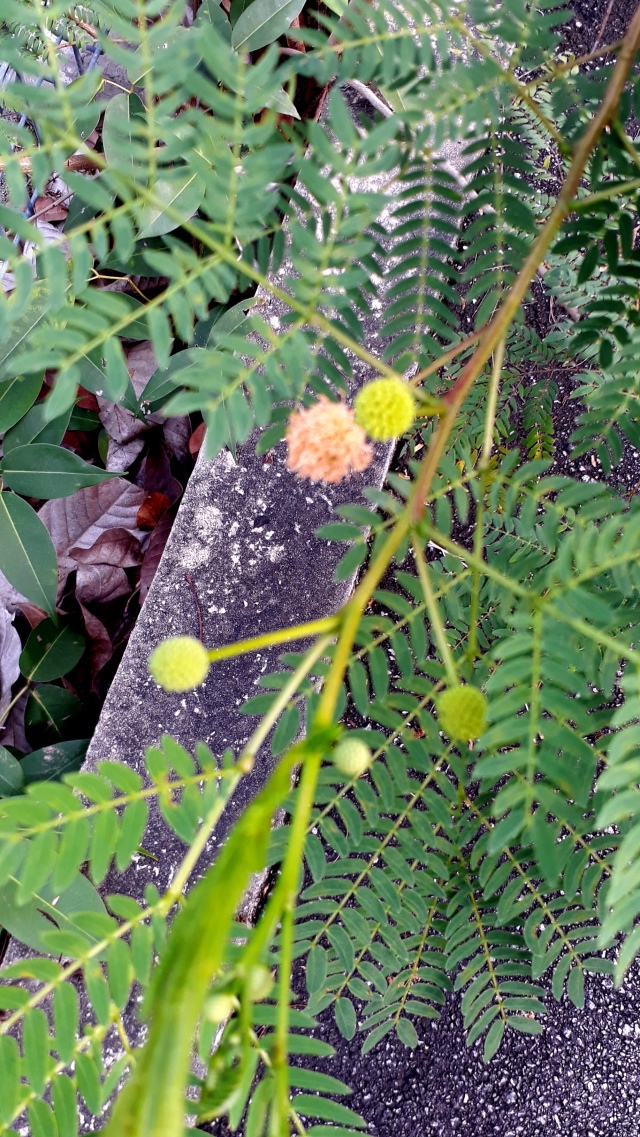
The foliage and seeds contain the toxic amino acid, mimosine, which can cause hair loss, reduced thyroid function, goiter, infertility, and other health problems if regularly ingested. Some ruminants like sheep, cattle, and goats can safely eat this plant if they are accustomed to eating it and have the necessary rumen bacteria for it.
Humans and non-ruminant animals can suffer hair loss and other health problems if they regularly consume this plant or make it a major portion of their diet.
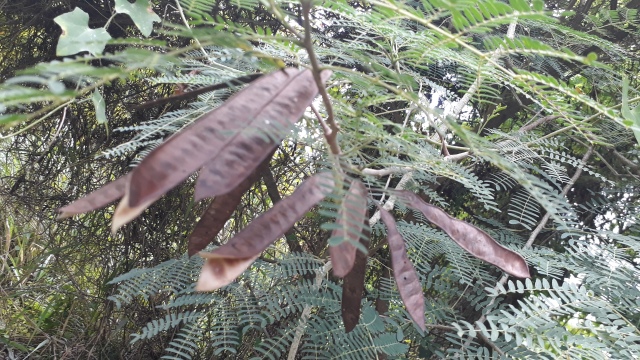
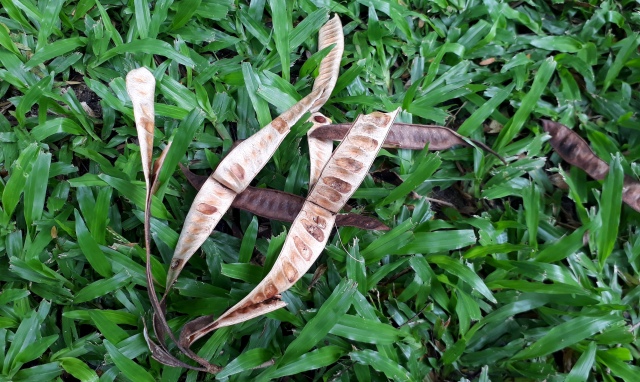
Leaf paste applied to poisonous stings and bites in Myanmar. Seeds used to treat diabetes and expel intestinal worms.
Young leaves and seedpods high in protein and Vitamin A, eaten as vegetable.
Seeds used as bean substitute in tempeh (traditional bean cake), reported to be delicious.
Seeds also used as coffee bean substitute.
Ripe seeds sometimes eaten parched like popcorn.
You must be logged in to post a comment.